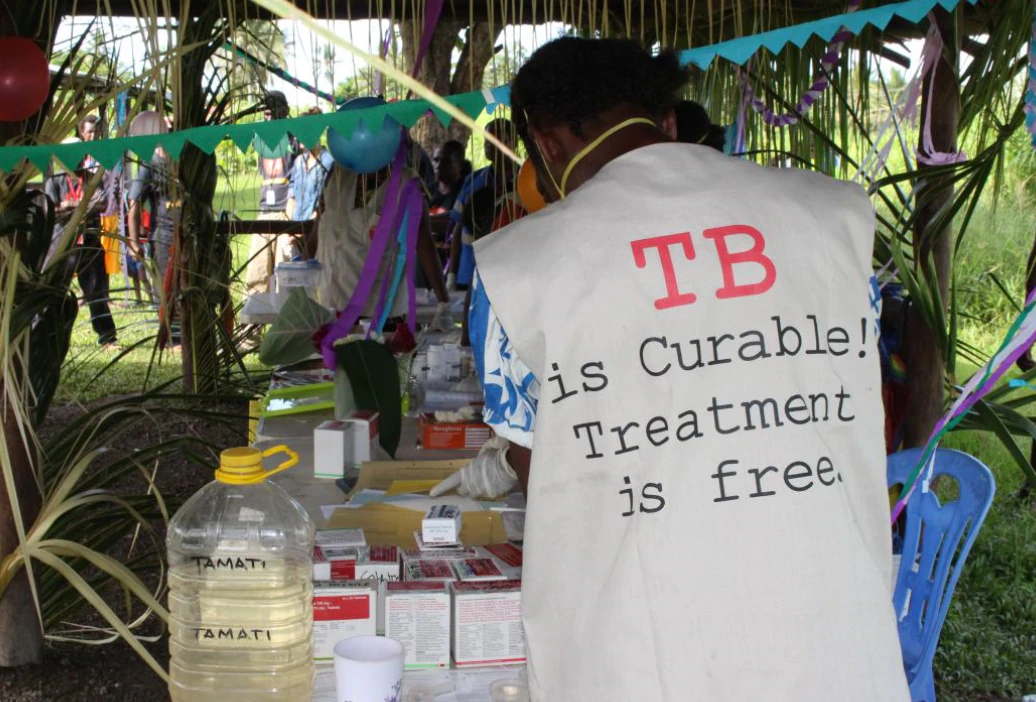While all eyes are on the COVID-19 crisis, one of the world’s deadliest diseases continues to haunt the Pacific.
Tuberculosis, or TB, is a highly-contagious airborne bacterial infection that attacks the lungs. It killed 1.5 million people last year – more than any other infectious disease except for COVID-19 and has been called a ‘silent’ or ‘hidden’ epidemic.
Dr Hemant Bogati works on tuberculosis control in Papua New Guinea for Doctors Without Borders.
“A lot of focus has gone to COVID, and funding has gone to COVID, and diseases such as tuberculosis have been left behind,” he said.
Tuberculosis is typically treated with a cocktail of antibiotics that must be taken daily over nine months or longer.
But drug-resistant strains that are much harder to treat are starting to emerge in places such as Papua New Guinea.
“As of 2016 there were about 2,000 new cases of drug-resistant tuberculosis in the country, and it’s slowly increasing,” Dr Bogati said.
“Globally, drug-resistant TB patients have a treatment success of less than 50 percent, and the cost of treatment is 100 times higher.”
Helem Waenesai is part of World Vision’s tuberculosis control program in Papua New Guinea’s capital, Port Moresby.
She said a key challenge was spreading awareness amongst communities.
“We are mobilising the community to know what TB is, and how we can help in treating and curing it,” she told SBS News.
According to World Vision, some 3,000 people die from tuberculosis in Papua New Guinea each year.
The Marshall Islands in the Pacific have the eight highest annual TB incidence in the world, with 4.48 cases per 1000 people. Papua New Guinea has the 10th highest, with 4.41 cases per 1,000 people. Kiribati has the 12th highest, with 4.25 per 1,000.
Australia, by comparison, has an incidence of just 0.7 per 1,000.
Tuberculosis thrives in crowded areas such as South Tarawa, Kiribati. With a population of some 50,000 people packed into a tiny area, South Tarawa is one of the most densely populated places on the planet.
Dr Jeremy Hill is leading TB control efforts on South Tarawa as part of the Australian-funded PEARL study.
“I would say the most prominent reason for (TB rates) being as high as they are now is because of the lack of access to the resources and technologies that are needed to actually address it,” he told SBS News from South Tarawa.
The PEARL study is a “whole of population” project aiming to screen and treat all South Tarawa residents aged three and over.
Worldwide, the COVID-19 pandemic has had a major impact on tuberculosis control efforts. For the first time since 2005, there has been a year-on-year increase in the number of people dying from TB.
Professor Ben Marais is an infectious disease expert, and one of the PEARL study’s leaders.
“We still have to uncover the full impact of COVID on global tuberculosis rates. We know that TB was the number one infectious disease killer before COVID arrived and that TB hasn’t gone away.
“The provisional data suggest there will not only be a dramatic increase in TB cases but also in TB deaths.
“TB control efforts will be put back by 10 to 20 years.”
Through the use of population-wide screening, Dr Marais said there was a huge opportunity to stamp out TB in places such as Kiribati.
While drug-resistant TB was not yet a widespread problem in the Pacific, Dr Marais said it was crucial to remain vigilant.
“In PNG already we have seen the emergence and spread of highly-drug resistant TB strains.
“The same can happen in other Pacific locations. That would be a catastrophe for TB control because these countries are not prepared for the added sophistication required in the management of people with drug-resistant tuberculosis,” said Dr Marais.
SOURCE: SBS/PACNEWS














